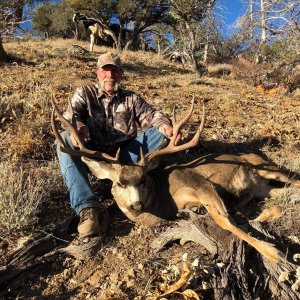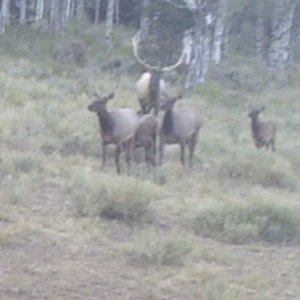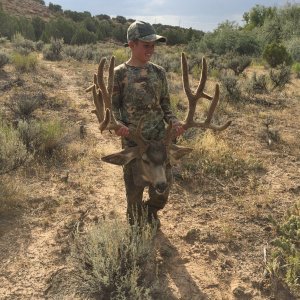nochawk
Moderator
- Messages
- 2,982
From todays Standard Examiner
http://www.standard.net/live/news/181034
Proposed plan for Antelope Island could involve hunts
By BRYON SAXTON
Standard-Examiner Davis Bureau
[email protected]
LAYTON -- An update to the Antelope Island Wildlife Management Plan, addressing the possibility of allowing limited annual hunts of bighorn sheep on the island, was presented Thursday at the Utah State Parks Board meeting in Salt Lake City.
Antelope Island State Park manager Ron Taylor introduced the three-member team putting together scientific recommendations for the board to help them consider when, or whether, to allow a bighorn sheep hunt on the island.
The professional team consists of three wildlife biologists: Steve Bates, with Antelope Island; Scott McFarlane, with the Division of Wildlife Resources; and Jericho Whiting.
The group will make scientific recommendations to the directors of state parks and DWR, who will then forward the information onto the state parks board.
"We've got a process in place here," Taylor said. "It is in its infancy, but it is moving fast."
On June 25, the board requested a team of biologists be formed to make recommendations about when future hunts may be needed to keep the island's herds healthy.

The board modified the language of the island's wildlife management plan by adding: "Limited hunting may be used as a management tool for the health of wildlife populations and their habitats when other management control options have not been effective."
Bates said he anticipates the team's recommendations for the bighorn sheep herd will be available to the board near the end of the year.
Taylor said the intent is to get a more accurate count of the wildlife on the island this fall by air and by land. The team, in addition to looking at the bighorn sheep herd, will also address over the years the island's bison, deer and antelope herds.
"We've got a process to manage the herds, not just the bighorn sheep," Taylor said.
But at this time, Taylor said, he does not see any indication that the island herds are overpopulated or unhealthy.
Antelope Island's wildlife management plan this summer became the eye of a storm when amendments were made, opening the door to limited annual bighorn sheep hunts on the island to keep herds healthy and disease-free.
Friends of Antelope Island opposed the move, citing concerns about the impact it would have on the animals -- chasing them away from the public -- and the direct effect that would have on tourism.
The overpopulation of a herd can make the animals more susceptible to disease, DWR director Jim Karpowitz told state park board members in an April meeting.
Thirty-nine bighorn sheep were introduced to the island in 1998.
The herd grew and 160 bighorn were transplanted to other parks, officials say. There are now about 160 bighorn sheep on the island.
Karpowitz said the animals have done so well, DWR needs to deal with the surplus of rams in other ways, outside of transplanting them. Transplanting can be costly and cannot be relied on as a long-term solution, he said.
The island wildlife management plan has been in place since 2001, Bates said.
Copyright ? 2009 Ogden Publishing Corporation
www.standard.net

http://www.standard.net/live/news/181034
Proposed plan for Antelope Island could involve hunts
By BRYON SAXTON
Standard-Examiner Davis Bureau
[email protected]
LAYTON -- An update to the Antelope Island Wildlife Management Plan, addressing the possibility of allowing limited annual hunts of bighorn sheep on the island, was presented Thursday at the Utah State Parks Board meeting in Salt Lake City.
Antelope Island State Park manager Ron Taylor introduced the three-member team putting together scientific recommendations for the board to help them consider when, or whether, to allow a bighorn sheep hunt on the island.
The professional team consists of three wildlife biologists: Steve Bates, with Antelope Island; Scott McFarlane, with the Division of Wildlife Resources; and Jericho Whiting.
The group will make scientific recommendations to the directors of state parks and DWR, who will then forward the information onto the state parks board.
"We've got a process in place here," Taylor said. "It is in its infancy, but it is moving fast."
On June 25, the board requested a team of biologists be formed to make recommendations about when future hunts may be needed to keep the island's herds healthy.

The board modified the language of the island's wildlife management plan by adding: "Limited hunting may be used as a management tool for the health of wildlife populations and their habitats when other management control options have not been effective."
Bates said he anticipates the team's recommendations for the bighorn sheep herd will be available to the board near the end of the year.
Taylor said the intent is to get a more accurate count of the wildlife on the island this fall by air and by land. The team, in addition to looking at the bighorn sheep herd, will also address over the years the island's bison, deer and antelope herds.
"We've got a process to manage the herds, not just the bighorn sheep," Taylor said.
But at this time, Taylor said, he does not see any indication that the island herds are overpopulated or unhealthy.
Antelope Island's wildlife management plan this summer became the eye of a storm when amendments were made, opening the door to limited annual bighorn sheep hunts on the island to keep herds healthy and disease-free.
Friends of Antelope Island opposed the move, citing concerns about the impact it would have on the animals -- chasing them away from the public -- and the direct effect that would have on tourism.
The overpopulation of a herd can make the animals more susceptible to disease, DWR director Jim Karpowitz told state park board members in an April meeting.
Thirty-nine bighorn sheep were introduced to the island in 1998.
The herd grew and 160 bighorn were transplanted to other parks, officials say. There are now about 160 bighorn sheep on the island.
Karpowitz said the animals have done so well, DWR needs to deal with the surplus of rams in other ways, outside of transplanting them. Transplanting can be costly and cannot be relied on as a long-term solution, he said.
The island wildlife management plan has been in place since 2001, Bates said.
Copyright ? 2009 Ogden Publishing Corporation
www.standard.net













